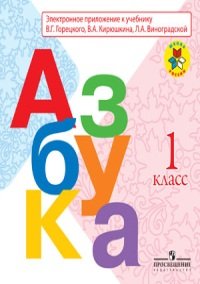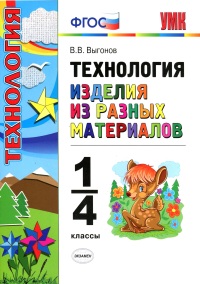P. Corrigan – College Latin. An Intermediate Course (2015)
745 ₽
Автор: P. Corrigan
Название книги: College Latin. An Intermediate Course (2015)
Формат: PDF
Жанр: Языкознание
Страницы: 462
Качество: Изначально компьютерное, E-book
Providing a much-needed grammar review, along with a variety of readings that will suit many different teaching preferences, this textbook helps students make the transition from beginning- to intermediate-level Latin. After using College Latin, students will be reacquainted with all major Latin grammar topics and be able to hold their own in continued higher-level studies.
The present book has been inspired by many of the same pedagogical instincts that informed
Harry L. Levy’s A Latin Reader for Colleges (New York: Prentice Hall, 1939). This admirable
volume, now long out of print, was quite innovatory for its time, anticipating many changes
that would occur in foreign-language instruction in the postwar era. Some traditionalists at
the time must have greeted Levy’s introduction of noncanonical authors like Aulus Gellius
and Phaedrus as radical. What probably dates Levy’s textbook most from today’s perspective
is the assumption that students’ curiosities are primarily antiquarian. As products of a
thoroughgoing presentism, our students today typically don’t value antiquarianism per se,
and they would meet an intermediate reader just like Levy’s with considerable diffidence.
Our textbooks need to reflect the progress we’ve made in understanding our students and
their widely varying learning styles.
This text contains material I’ve worked on and with for nearly thirty years. Over time,
innumerable little things have been added to and subtracted from the book, mostly due to
students’ responses, which I have always tried to take into careful account. So many of my
Latin students have “test-driven” significant sections of this book that there isn’t space here
to thank them all by name. But I know that whatever virtues reside in this text are largely
due to them. They have made the teaching of intermediate Latin—an assignment that some
instructors dread—a true pleasure for me, and I remain mindful of and grateful to them.
I also extend my heartfelt gratitude to two colleagues who have used my materials in
their classes and provided me with invaluable feedback. Dr. Emily B. West of St. Catharine
University has shown the utmost patience and forbearance with me as I tested ideas for this
book (and others) on her and her students. Dr. Robert Mondi of the University of Northern
Colorado has been a treasured friend and collaborator; I have spent many hours imposing
on his knowledge of the pedagogy of ancient languages. And he has generously devoted to
me long stints of reading drafts and arguing fine points. Because of the input of both these
scholars, this book has benefited from countless improvements Another debt of gratitude I must acknowledge goes to those inmates I’ve tutored in an
English-literacy program at a local jail. Many of the lessons I learned from teaching English
speakers to read English have worked their subtle way into this book. Because of this experience,
I no longer teach intermediate Latin as a foreign language but as a familiar language,
and my outcomes are much improved. I want to thank the gentlemen I’ve worked with over
the years who contributed a richness to my teaching career while their own lives stood in
difficult transitions. Their efforts at self-improvement never failed to inspire me.
The anonymous readers for Yale University Press offered some exceptionally good suggestions
for making this a better book, and I am most thankful to them. And the admirable
editorial staff at Yale was a delight to work with; I single out Ash Lago and, particularly, Tim
Shea for special thanks.
The encouragement of friends R. Amy Elman and W. Trent Foley for this project sustained
me and was much appreciated. Last, I thank Junjuan, my wife, and Daniela, my daughter, for
their boundless understanding during my push to complete this book. Without all their support,
my efforts would be for naught.
Teaching intermediate Latin to college or university students offers a variety of challenges.
The mix of students can often be quite heterogeneous: besides those who have taken the
institution’s beginning Latin sequence, there are others enrolled who have studied Latin in
high school or at a different college or even through self-study. Moreover, they enter the class
having been trained with different introductory Latin texts, informed by different pedagogies.
The instructor of such a heterogeneous class needs to homogenize it within a week
or so. For students to proceed successfully with the language, therefore, intermediate Latin
requires a text and an approach that will “level” all earlier texts and approaches. Intermediate
Latin is also difficult because it is the hump course for students to develop the reading skills
they’ll need in upper-division courses on Latin literature. And to mention just one more of
the challenges frequently encountered in intermediate Latin: this is the course where a student
discovers that the Romans valued poetry far more than our culture does, and if she or
he wants to continue studying Latin, a basic comfort with verse expression must be acquired.
This enumeration is hardly exhaustive. I might add one more difficulty I occasionally encounter.
In the introductory sequence, there are some students who fall in love with the
tidiness of Latin morphology and the exquisite logic of many grammatical constructions,
but these same students, when they first confront the nuances and complexities and ambiguities
of literary texts in intermediate Latin, become frustrated and disappointed: How can
a language that makes so much sense be used to make such little sense?, they sometimes ask.
I sincerely hope that this text will ameliorate these and most other challenges that intermediate
Latin poses. It has certainly worked better in my classes than the alternative texts
available, precisely because it begins to model the sort of critical thinking that more advanced
literary studies require, and it shows off much of the intriguing complexity of Roman
society and culture. At the same time, though, it provides a thorough overview of morphology,
syntax, and vocabulary building for the students’ recovery and review; thus, throughout
the book, students are constantly reminded that proficiency and fluency largely depend on their secure command of these features of the language. This text should definitely lower the
elevation of that hump between introductory and advanced Latin courses, with the desired
outcome that it will also lower the attrition rate typically observed in enrollments at this
stress point in the Latin curriculum.
There is a fundamental threefold purpose to any intermediate Latin course: the recovery
and review of morphology and syntax, the continuation of vocabulary acquisition, and the
introduction to largely unadapted texts from Roman literature. The comprehensive overview
of grammar in part I provides students with all the information they need about the
language at this stage in their progress; indeed, it can serve as a useful reference for most of
their succeeding upper-division Latin literature courses. To be sure, the numeration system
used in this section may seem unnecessarily cumbersome at the time of reviewing it. But its
value and purpose will become readily apparent to you on encountering the marginal grammar
cues in part III. The exercises in part II reinforce most of the more challenging concepts
that part I presents and should be used for that purpose. The vocabulary employed for the
illustrations in part I and for the sentences in part II is fairly basic and presumably was mastered
during the students’ prior study of the language. To help distinguish authentic from
“made-up” Latin, I have not capitalized the first words of sentences in parts I or II, unless
they are proper nouns.
I have drawn the Latin readings in part III from a great variety of sources over a considerable
span of literary history. They weren’t necessarily chosen for their high Latinity; in
fact, in some places the Latin can be downright poor (the students won’t really know it, of
course, unless it’s pointed out to them). The readings were selected to reflect the breadth of
Latin literature and to engage the interests and sensibilities of modern college and university
students. Battle narratives and forensic oratory won’t be found here; they can be studied and
appreciated in upper-division courses. In fact, none of the readings found in this textbook
is likely to be reencountered later on in the students’ undergraduate study, and a word of
explanation to justify this is probably warranted. When I teach advanced Latin courses on
Catullus or Ovid or Cicero or Livy, it is a personal bête noire when a student declares to me
that he or she “knows” a passage or a poem just because the student’s intermediate Latin
class read it; getting a student to unlearn to relearn takes a lot of energy on both sides. The
truth is, whatever literary analysis that’s done at the intermediate level is fairly superficial and
selective—and that’s how it should be. After using this book, a student will greet the great
texts of Roman literature, whether poetry or prose, as a tabula rasa, and I believe there is an
advantage to this all around.
A further word on the use of noncanonical authors and texts: of course, typical intermediate
students don’t fully grasp what is or isn’t canon or why, and they need to learn considerably
more Latin to make any discussion of canon substantive for them. I find it much more
useful at this stage of their learning to employ the noncanonical to whet their palates for the
canonical. In my intermediate classes, I can commonly be heard uttering something like “If
you think this is good/interesting/provocative, just wait till you read ____!” The preceding
blank can be filled in with Cicero, Ovid, Vergil, Horace, Terence, Caesar, Catullus, Livy, or
Tacitus as situationally appropriate. The readings in this volume offer tasty appetizers; we need to build anticipation for the more substantial and piquant entrées to follow. If we’re
smart, we’ll always be talking up the next courses in our curriculum.
An explanation can be offered for this text’s heavy use of fables, aphorisms, and anecdotes.
There is an inherent pleasure—one might even say comfort—in fables, as Phaedrus
first acknowledged. Students are immediately put at ease when told they are going to read
a Latin fable; this information even seems to trump most anxieties about reading poetry.
Moreover, ancient Roman thought is markedly less dialectical than ancient Greek. Latin literature
relies much on the aphoristic and the anecdotal to capture the truth or essence of any
given topic, especially in prose, where the logos of aphorism or anecdote commonly replaces
the muthos of poetic fable and myth.
In part III, grammar cues and vocabulary aids are very generous for the first few selections
in prose and verse, but then they taper off some. The intent here is that students will realize
that overreliance on these types of assistance will begin to hold them back. At some point in
their linguistic development it’s better and easier for them to puzzle out that a certain accusative,
for example, is a subjective accusative and not a direct object than to double-check it
against the grammar of part I. Similarly, we don’t want reading facility to be frustrated simply
because of a student’s weak vocabulary, but at the same time we constantly need to motivate
students to improve their vocabulary; apart from these considerations, the broad semantic
range of many Latin lexemes requires us to accustom students to the use of dictionaries—
not a bad thing. Balancing the various desiderata here is not an easy calculus, but if I’ve erred,
it’s usually in the direction of trying to improve reading facility.
That near-equal attention is paid to prose and verse readings requires little comment. In
our upper-division Latin curriculum we typically pay near-equal attention to poetry and
prose. It only makes sense that the bridge course to advanced studies should reflect what the
subsequent curriculum strives for: an equal proficiency in Latin prose and verse.
The book provides fairly copious supplemental readings in part III. Their overall content
and pedagogy are consistent with the other readings; in this case, more of the same serves
to showcase further the breadth and depth of Roman literature and thought. Students and
instructors are free to do with them what they will: self-study, testing, practice, further topical
reading, diagnostics, extra credit. However they’re used, they can be very beneficial for
advancing the students’ reading skills, and they should be mined for the resources that they
contain.
Every reading is accompanied by questions called “Reading for Information” and “Reading
for Understanding.” While the obvious common denominator is reading and its promotion,
the two kinds of questions do different things. “Reading for Information” questions,
together with the headings or introductions, are intended to situate the students in
the passage even before they begin reading it. On the principle that all proficient reading
is basically anticipatory (that is, when we read, we’re always engaged in the active process
of expecting what will come next), these questions simply prime the pump by helping the
students to anticipate, and the questions should therefore be read and answered carefully—
the answers will reveal whether or not the students are reading with precision and attention
to detail.
Not to oversimplify things, but success in college Latin depends mostly on your command
of Latin vocabulary and your ability to distinguish between different uses of common constructions
(e.g., the ablative case or the subjunctive mood). For the former, part IV presents
a straightforward strategy; follow that and you will cultivate a strong operative vocabulary,
serving you well in your next Latin courses too. As for the latter, keep a careful eye out for
those uses or constructions that are high-frequency, make sure you really understand the
language logic underlying them, and repeatedly test your understanding with those exercises
in part II that are keyed to them. To that end, I strongly recommend that you don’t write your
translations of the exercises in the book itself; rather, write out the Latin of the exercises on
separate paper and adjoin your translations thereto. That way, you can repeat the exercises
as many times as you need to in order to achieve the desired accuracy and precision in your
translations.
Armed with a strong vocabulary and a secure command of grammar and syntax, with
your instructor’s assistance you will begin to gain a facility in reading Latin—not simply
translating it. Remember that reading, whether it’s in your first language or a studied language,
relies heavily on expectation or anticipation: as we’re reading, we’re almost always
guessing what will come next. Therefore, be guided by the headings for each reading and the
“Reading for Information” questions, as well as even the “Reading for Understanding” questions;
these will help shape your expectations, create greater fluidity within each reading,
and pave the way for your reading fluency.
You’ll know you’re getting better at reading Latin when you find yourself less often looking
down for vocabulary aids and over for grammar cues. Keep in mind that even the most
expert Latin scholars occasionally need to consult grammar books and dictionaries, so don’t
get discouraged in any way just because you’re using the assistance provided to facilitate
your reading.
Finally, the supplemental readings found in part III offer you great opportunities to practice
the skills you’re trying to develop. It’s a pretty simple truism: the more you practice
your Latin skills, the better they’ll become. The supplemental readings are interesting, and
they’ll complement and sophisticate your understanding of the major themes that each of
the six reading sections present. One more idea: use these readings to keep “road rust” off
your Latin during winter, spring, and summer breaks. Reading Latin is like playing a musical
instrument: the best way to get better at it is by practicing every day. Muscle memory is as
important for languages as for playing music.
What you find in this textbook is but a foretaste of all that you can enjoy in the vast variety
of Roman literature. If you like the fables or the love poetry or the natural sciences or the
medical writings or the aphorisms or the historical anecdotes, there are plenty more where
these were selected from. Your instructor can point you to similar texts for further reading.
Probably the most important thing for you to recognize, though, is the spectacular panorama
that is Roman literature. Here can be found nearly every subject and every perspective approximating
the sum of human thought, observation, and experience. When you consider
that this all took place roughly two thousand years ago, it’s nothing short of amazing. The
basic challenge for you as you proceed in your firsthand understanding of Roman thoughts
and values is to remain open to the ideas they got right as you stay alert to and cognizant of
the ideas they got wrong. This understanding will help you in your lifelong effort to make
sense of your own culture.





Отзывы
Отзывов пока нет.